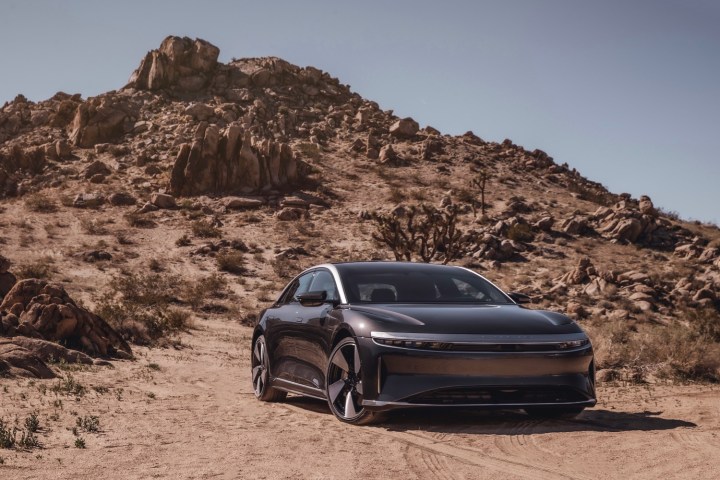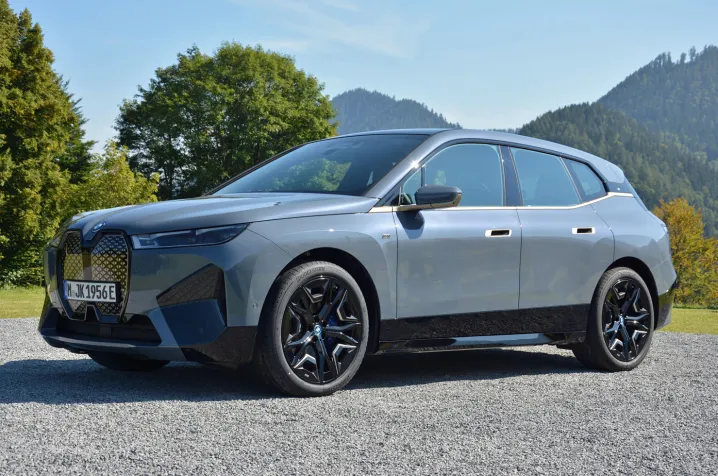Luxury electric vehicles have always been arguably the most important EVs for the industry. Sure, these aren’t the cars for the masses, but they are the cars that leverage new technologies and push development forward first. After all, the first so-called cool EV was the relatively expensive Tesla Model S, which paved the way for more affordable cars like the Tesla Model 3 and Model Y.
These days, there’s a much larger selection of luxury EVs, and if you have some money to spend and want something high-end, there should be a vehicle out there for you. Curious about which luxury EV is best for your needs? Here’s a look at all the best luxury EVs you can get right now, along with their starting prices.
Lucid Air ($69,900)

The Lucid Air isn’t just luxurious; it’s technologically advanced. The Lucid Air offers the most range of any EV out there right now, and some of the higher-end models offer a range of up to 512 miles. That’s absolutely huge and means that you won’t have to worry much about charging in day-to-day driving. It’s also incredibly fast, as some Lucid Air trims can hit 60 miles per hour in only 1.89 seconds.
But it’s also highly luxurious. The car has a stunning panoramic glass roof and a roomy interior. It’s built with premium materials both inside and out, including beautiful stitched leather seat coverings. The seats offer heating, ventilation, and massaging functionality. The interior of the vehicle also offers a somewhat unique display setup with a wide screen for instrument monitoring and infotainment, and another screen below it to control things like climate, drive modes, and so on.
BMW i7 ($105,700)

The BMW i7 has made headlines in the past for features like the widescreen TV that can descend from the ceiling for back seat passengers. But beyond features like that, it’s an incredibly luxurious car. The plush seating with heating, ventilation, and massaging makes riding in the vehicle incredibly comfortable. Both front and rear passengers will get access to those features. Rear passengers also have displays of their own, which they can use to control their own climate zones, seat controls, and window shades. The car is adorned with LED accent lighting throughout the interior, coupled with a wide curved display at the front for infotainment.
Arguably, this vehicle is better to be a passenger in than to drive, but it’s also a great EV. The vehicle has a range of up to 321 miles, depending on which trim you get. If you get the higher performance i7 M70, you’ll be able to accelerate from 0 to 60 mph in only 3.5 seconds. That’s pretty quick, even if it’s not quite as fast as the Lucid.
BMW iX ($87,250)

Those who want something slightly bigger, with many of the features of the i7, should go for the BMW iX. The iX doesn’t have all the same features as the i7, but most of the things that make being a passenger in the i7 enjoyable are present in the iX. You’ll still get the super plush seating, the dedicated passenger controls for climate, and the stunning accent lighting. While testing many of the cars on this list, I found BMW’s seat coverings to be among the best, and the leather is both durable and comfortable. The iX also benefits from a massive panoramic glass roof, which helps make it feel even more spacious than it already is.
As an electric car, the iX isn’t bad. The car gets up to 309 miles of range. It has a charging speed of up to around 150 kilowatts, though some drivers have reported being able to charge a little faster than that.
Mercedes-Benz EQS ($104,400)

The Mercedes-Benz EQS is Mercedes’ take on a luxury electric vehicle. At this point, there are a number of EQS trims to choose from. Say what you will about the exterior design of the EQS (I don’t love it), but you can’t deny how luxurious the vehicle is. On the inside of the car, you’ll get super plush seating with dedicated pillow headrests. The cabin is built from super premium materials and features a large display for infotainment. There’s nice accent lighting throughout and plenty of storage space, including a wireless charging pad for your phone. Even Mercedes’ software has been getting better, though you still might end up simply using CarPlay.
The EV specs on the EQS vary widely depending on the trim you get, but you can get up to 352 miles of range, which is pretty good. You can also get an acceleration to 60 mph in up to 4.1 seconds, which is reasonably quick. Having driven the EQS on a number of occasions, I will say that while it’s not the most responsive car to drive, it has relatively soft suspension that that helps make the road feel a whole lot smoother.
Porsche Taycan ($99,400)

The Porsche Taycan is the luxury EV to get if you’re looking for an electric sports car. The Taycan offers that classic Porsche look, with a sporty appearance and feel both inside and out. The seats offer a partial leather covering that can be personalized during configuration. However, there’s also a leather-free option too. This particular vehicle is a four-door car, so while it’s definitely a sports car, you could still use it for the family.
The overall performance and range of the car depend on the trim that you get. The highest-end version can accelerate from 0 to 60 mph in only 2.1 seconds, which is incredibly fast. The vehicle offers up to 292 miles of range, which is fine. But it also supports a charging speed of up to 270kW, which is pretty quick and allows the car to charge from 10% to 80% in around 20 minutes.
Tesla Model S ($68,490)

We couldn’t discuss luxury EVs without talking about the original luxury EV, the Tesla Model S. While the Model S has been available for some time now, it has also been updated on a number of different occasions, and it’s still an excellent choice for those who want to step up from the Model 3 sedan. The Model S embodies Tesla’s approach to design with a minimalistic interior and a sleek and stylish exterior. It comes with Tesla’s sports seats, and you also get Tesla’s software, which is among the best out there.
Tesla is known for offering premium technology in its vehicles too. The Model S is available in two trims, and depending on the trim you get, you’ll get up to 402 miles of range, which is very good. The Model S Plaid is also very quick, offering an acceleration from 0 to 60 mph in 1.99 seconds. That makes it among the fastest cars out there right now.
Tesla Model X ($65,990)

If you like the idea of the Tesla Model S, but want something a little bigger, then the Model X may be for you. The vehicle is taller overall and was made famous for its gull-wing doors that open out. That’s not only a cool party trick, but it makes the rear seat door opening bigger too, which is good news for people who have kids and constantly find themselves having to strap their kids in without enough room.
Everything else about the Model X is very Tesla. You get that minimalistic interior, the great Tesla software, and the stylish exterior design. The car doesn’t quite offer the same range as its sedan sibling, maxing out at 335 miles, though that’s still pretty good. If you upgrade to the Model X Plaid, it’s very quick too, with the ability to accelerate to 60 mph in only 2.5 seconds. For that, you’ll have to pay a little extra, though.



